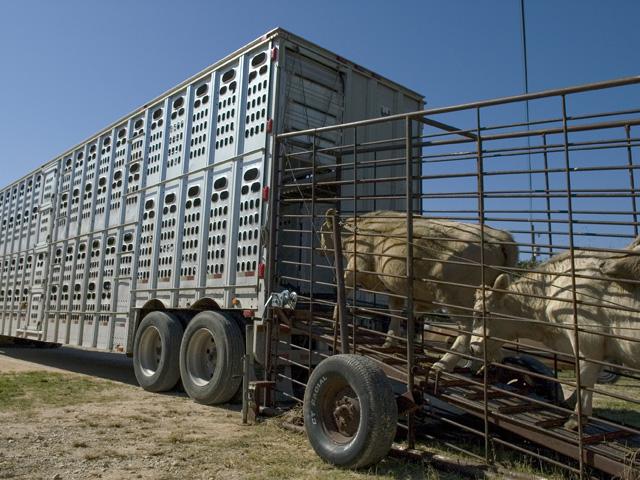Securing the Beef Supply
Nationwide Shutdown of Cattle Movement Would Be Part of Planned FMD Response
While the U.S. has been free of foot and mouth disease (FMD) since 1929, it remains a critical threat to producers here. Response to an outbreak would be determined locally in many respects, but where animals are being transported, there are national repercussions to be aware of.
Kansas Department of Agriculture Veterinarian and Animal Health Commissioner Justin Smith outlined some key considerations for producers in the event of such an outbreak at the recent National Cattlemen's meeting in Texas. He said that while there are new tools to help, producers should expect something like a 72-hour nationwide shutdown of movement of livestock in the event of FMD. He compared this to the stop of airline traffic after 9/11. This would be a big job. It's estimated that about 400,000 cattle and 1 million pigs are in transit across the U.S. daily.
COST OF AN OUTBREAK
The cost of an FMD outbreak would be substantial. To compare, as recently as 2001, the United Kingdom suffered an outbreak with an estimated economic impact of $12 billion to $18 billion. It is estimated that an outbreak today in just California would cost $6 billion to $14 billion, whereas a nationwide incident could reach upward to $228 billion. Those estimates come from research out of U.C. Davis.
FMD affects cattle as well as pigs, sheep, goats, deer, elk and bison. It is not considered a public health threat, with infections in humans very rare. FMD is introduced through infected animals, carrier animals and contaminated objects or materials. It is highly contagious, and animals can shed the virus one to four days prior to onset of clinical signs. The incubation period is two to 14 days, with morbidity significant, often reaching 100%.
P[L1] D[0x0] M[300x250] OOP[F] ADUNIT[] T[]
Today, there are vaccinations for FMD, with relatively positive immunity results in cattle. The vaccine does not only prevent clinical disease but can help control FMD transmission. In the event of an outbreak, vaccinations would be one tool used in the fight. Concerns in recent years over the amount of vaccine available have been met with a concerted effort to build supplies. In 2020, Boehringer Ingelheim was awarded a contract by USDA to help supply a vaccine bank to protect U.S. livestock. This is a strategic reserve of frozen vaccine antigen concentrate that can be quickly formulated into a vaccine. The company is the world leader in managing FMD vaccine banks, with 17 FMD banks being maintained for various countries and organizations.
IN THE EVENT OF AN OUTBREAK
Response to an outbreak would be guided through the National Response Framework, available to view at https://www.fema.gov/…. USDA would be the coordinating agency in the event of an outbreak. The APHIS Emergency Mobilization Guide notes the initial response to an incident will be handled at the local level.
Kansas veterinarian Justin Smith is at the forefront of developing plans in his state to deal with an emergency like this, and he told producers at Cattlemen's College that the first thing they'd likely see would be that nationwide shutdown of movement. After that, once the extent of the outbreak was established, and the beef supply was secured, permitted movement could begin. That could take several weeks.
Smith noted that prior to an emergency of this scope, producers should have a premises identification number, because those would be required in the event of an outbreak to restart shipments. In addition, operations should consider naming a biosecurity manager, have in mind a clearly defined boundary as to access to their operation and livestock, have a daily mortality management plan, and be able to reduce staff and limit traffic to manage access. He suggested producers go through the Beef Quality Assurance templates to help them make a plan.
RESTARTING TRANSPORTATION
After an outbreak, and before movement began again, records would likely be required and reviewed. Some key records to have on hand would address proof of meeting the disease surveillance requirements, records of movement, visitors logs and previously implemented biosecurity plans.
To know what your state's response plans are in the event of FMD, reach out to your state veterinarians' office (https://www.usaha.org/…). This will help you be prepared in the event of an outbreak. In addition, utilize BQA biosecurity information and templates found here: https://www.bqa.org/….
Victoria Myers can be reached at vicki.myers@dtn.com
Follow her on Twitter @myersPF
(c) Copyright 2022 DTN, LLC. All rights reserved.






